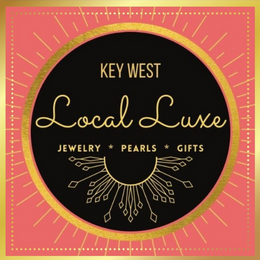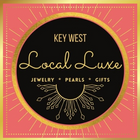I See Your True Colors-and I LOVE THEM! A Pearl Color Story
Have you ever looked at a pearl and wondered about its color? Maybe you thought all pearls were originally white. Maybe you thought, “How could something with such a pretty color be natural?” Maybe you thought it would be great to wear an amazing strand of pearls to brunch and ended up not really caring what other colors you were wearing or if it even matched because…well…PEARLS. No? Just me?! Okay, I’m getting off track here (although, I know it’s not just me). Today, we will be talking all about how pearls form their magnificent colors!
If you are surprised to learn that all pearls are not originally white, you’re not alone. Even the word “pearl” is synonymous with the color white. Though white and cream are the most commonly known colors, the palette of pearl colors extends to every hue. The main color, or body color, is the pearl’s dominant overall color. Overtones are one or more translucent colors that lie over a pearl’s body color, and are typically pink (sometimes called rosé), green, purple, or blue. Some pearls also show the iridescent phenomenon known as orient, a shimmer of rainbow colors on or just below a pearl’s surface. All pearls display body color, but only some show overtone, orient, or both. For most, those are considered to be 'finer' - although, it all comes down to personal taste.
This first photo is a 100% natural strand of Rikitea Bribe Tahitian Pearls that were hand-selected by Barb and strung for us with a 14k Gold safety clasp and, let me tell ya' - those babies are EVERYONE'S TASTE!

This next photo is a collection of dark and lovely, Freshwater Peacock Pearls, which are sometimes referred to as Freshwater Blacks. They are typically, dyed but sometimes, natural, as well. They're also, very beautiful and very affordable - gotta love THAT!

So, how do all of these beautiful colors occur? Well, there’s a few different factors that affect a pearl’s color, overtones, and orient. The first is the type of mollusk. Pearl colors are mainly influenced by the color of the mollusk lip, which refers to the outer part of the shell. For example, the infamous and amazing Tahitian pearls (which are also commonly referred to as black pearls) come from the Pinctada Margaritifera oyster, which as gray and silver tints at the outer edges of its shell. This is the only mollusk that can form natural black pearls (I have a whole blog post dedicated to Tahitians if you want to read more about these gorgeous pearls). Another popular variety is the silver lipped oyster, or Pinctada Maxima, which is known for creating the optic white and silver colors of South Sea pearls.
Another factor in a pearl’s color is the thickness of its nacre. What the heck is nacre, you may be asking yourself? The nacre refers to the substance that the mollusk uses to layer the irritant (like a parasite) placed within it. Over time, this grows into the pearl. In general, the thicker the nacre, the deeper and richer the color of the pearl. The thickness of the nacre also affects the pearl’s iridescence, with thin nacre usually creating milky pearls with little to no overtone and thicker nacre creating more orient.


Fun fact: though most pearls are cultured, humans do not have much control over the color of a pearl as its organically forming. Sometimes, pearl farmers can influence the color of the pearl by using various culturing techniques, such as including tissue from an additional oyster into the host oyster as well as the nucleus, but it is not guaranteed to create the color that they want. Nature has it’s own mind when it comes to the true colors of a pearl! Of course, dyeing a pearl is another way to change the color of this gem. For example, any black pearl you see on the market that is not a Tahitian pearl, has been dyed. This includes black Akoya pearls, which are known for they lovely luster. Why do Akoyas have SO much luster? Good question! Two things: 1) They're farmed in very nutrient rich waters and the shells are kept impeccably clean - allowing more nutrients for the mullosk 2) They're only nucleated ONCE - most Freshwater Pearls are nucleated many times. So, the nutrients are shared between the pearls, but not these guys!
So, what are the rarest, natural colors of pearls? Pink pearls are highly valued, especially in the United States, but are among the rarest natural pearl colors. These are created by the endangered queen conch snail, and as yet, have not been successfully cultured. Therefore, they are quite spendy and are usually sold loose and never drilled. One in 50,000 conchs is said to produce a pearl and then, somebody's got to FIND IT! Beware - there are many fakes out there on the web!
These are Conch Pearls and YES! We DO have some! They will be hitting the site, soon but if you're in the market for one, call us!

Back to what most of us consider to be 'pink pearls'... As a result of the rarity in natural pinks, most pink pearls on the market are dyed freshwater pearls.
Another rare and highly prized type of pearl is the Golden South Sea. These are created by the gold lipped oyster and are only found in certain parts of the world, just like Tahitians.
Although in the past irregular shapes like these were seen as junk in the pearl world, these large and lustrous BAROQUES! (inside joke), are now highly coveted and typically VERY spendy - about double our prices (very, very nice-s! LOL!).
Moral of the story: pearls naturally create beautiful colors in an array of hues, which is just another reason why Mother Nature ROCKS! I hope you have liked reading about the color story behind pearls today.
Did this make you want to get some new, gorgeous strands of lustrous 'Lady-Balls' or 'Mearls'?? YES! Man Pearls are a THING! And here's Jason Momoa, to prove it! 
Well, have you come to the right place! Barb has pearls from both ends of the color spectrum, and everything in-between! Hop on the website to be awed and amazed by her vast pearl selection!
*This Blog Post was written by Amber Viles & then, edited + added to because Barb had a bunch of pics of new pearls she wanted to add + Jason, of course!





Leave a comment